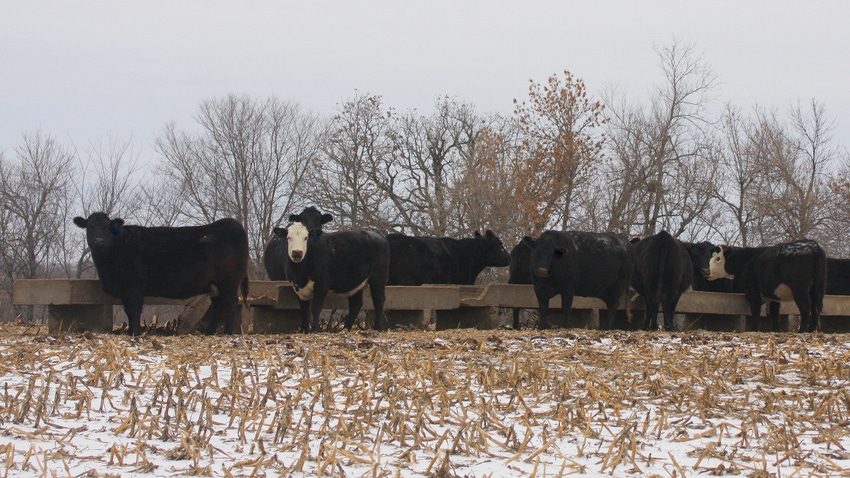October 13, 2023

Cattle grazing in fields of corn stubble is a common sight in the Dakotas. After corn harvest, the husks, leaves, stalks and corn left behind can be eaten and utilized by a grazing animal. This low-cost feed option can save harvested forages for the winter and give pastures a break.
When cows graze forages all summer, an overload of corn stubble can disrupt an animal’s rumen. The rumen cannot adjust to the change in diet, and death is a possible outcome. However, management practices can reduce or eliminate these losses.
Before turning cows out on stalks, ensure the animals have a full belly. Provide hay or other forages in the pasture or drylot so they do not overeat ear corn. Ensuring animals are full will reduce the feed they need to consume that first day on the stalks.
Drive around the headlands of the field and scoop up any grain piles that fell from the combine, grain cart or semis during harvest. Discuss any potential spills in the field with the landowner if you rent cornstalk ground. If only one or two cows find that pile, they will likely eat it all and suffer from potentially terminal acidosis.
Nutrition needs
Depending on the length of the stalk grazing season, make sure the cows’ nutritional needs are met. Water, salt and protein should be monitored.
Water sources may include a dugout, slough or tire tanks with rural water. Each of these must be watched to ensure quality water is provided throughout the grazing time. Dry conditions can deteriorate the water availability in natural water resources. Winter weather can freeze all water options.
Salt is considered a top nutritional resource by many beef nutritionists and should be made available to cows on cornstalks.
The longer the herd grazes stalks, the amount of corn on the ground will decrease. As the grain is removed, the cows will need a protein supplement to help them utilize the forages that remain in the husks, leaves and stalks. The type of protein source you choose will vary in price and delivery method, so evaluate the best decision for your operation.
Turning cows into stalks is a simple way to keep your mid-gestation feed costs low. Cows in mid-gestation after weaning need average-quality feed. The corn they pick up will help them regain some of the weight lost by nursing a calf.
The cows clean up fallen corn, resulting in less volunteer corn next summer. Lastly, as a manure management plan, cows eating in the field helps keep drylots cleaner, reduces the amount of manure spreading in the field later and incorporates organic matter into the soil.
Source: SDSU Extension
Read more about:
GrazingYou May Also Like




